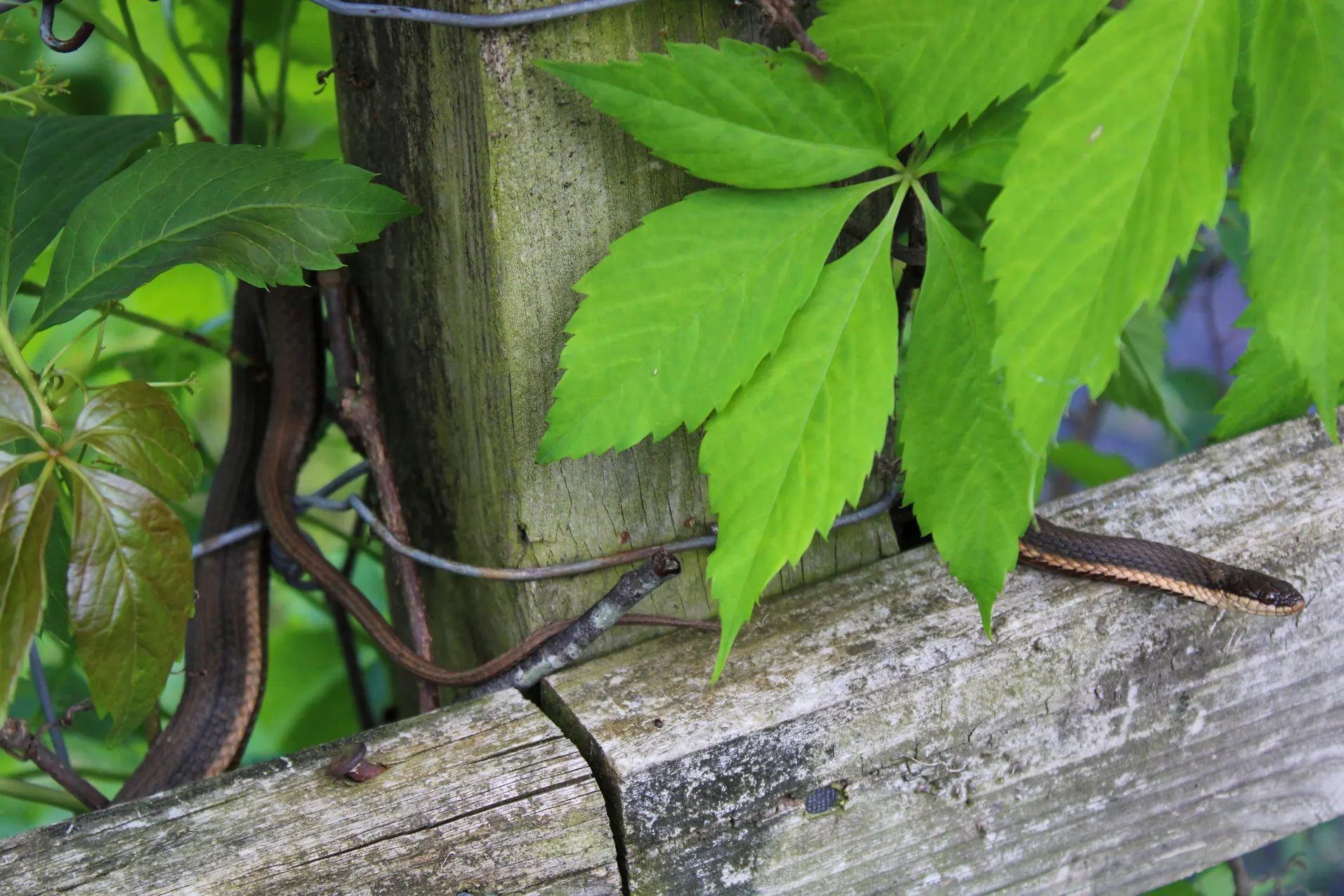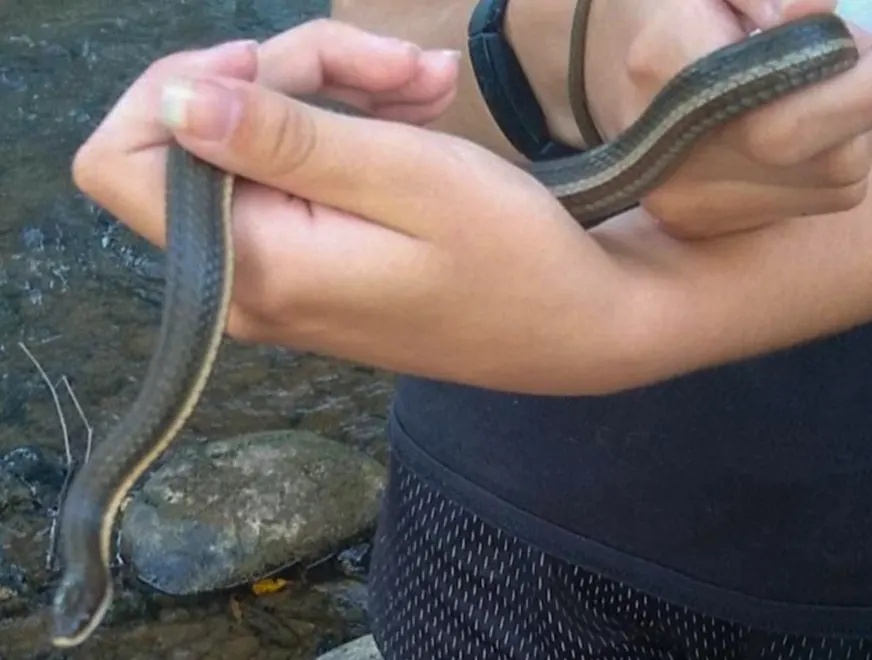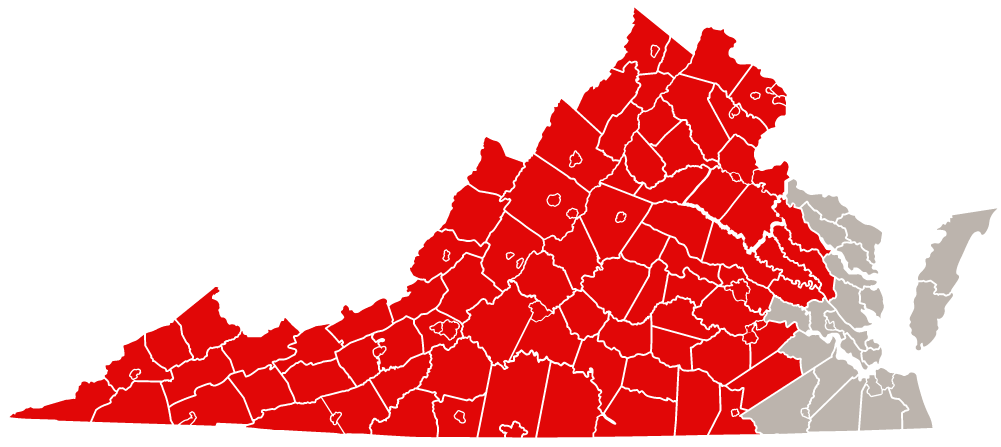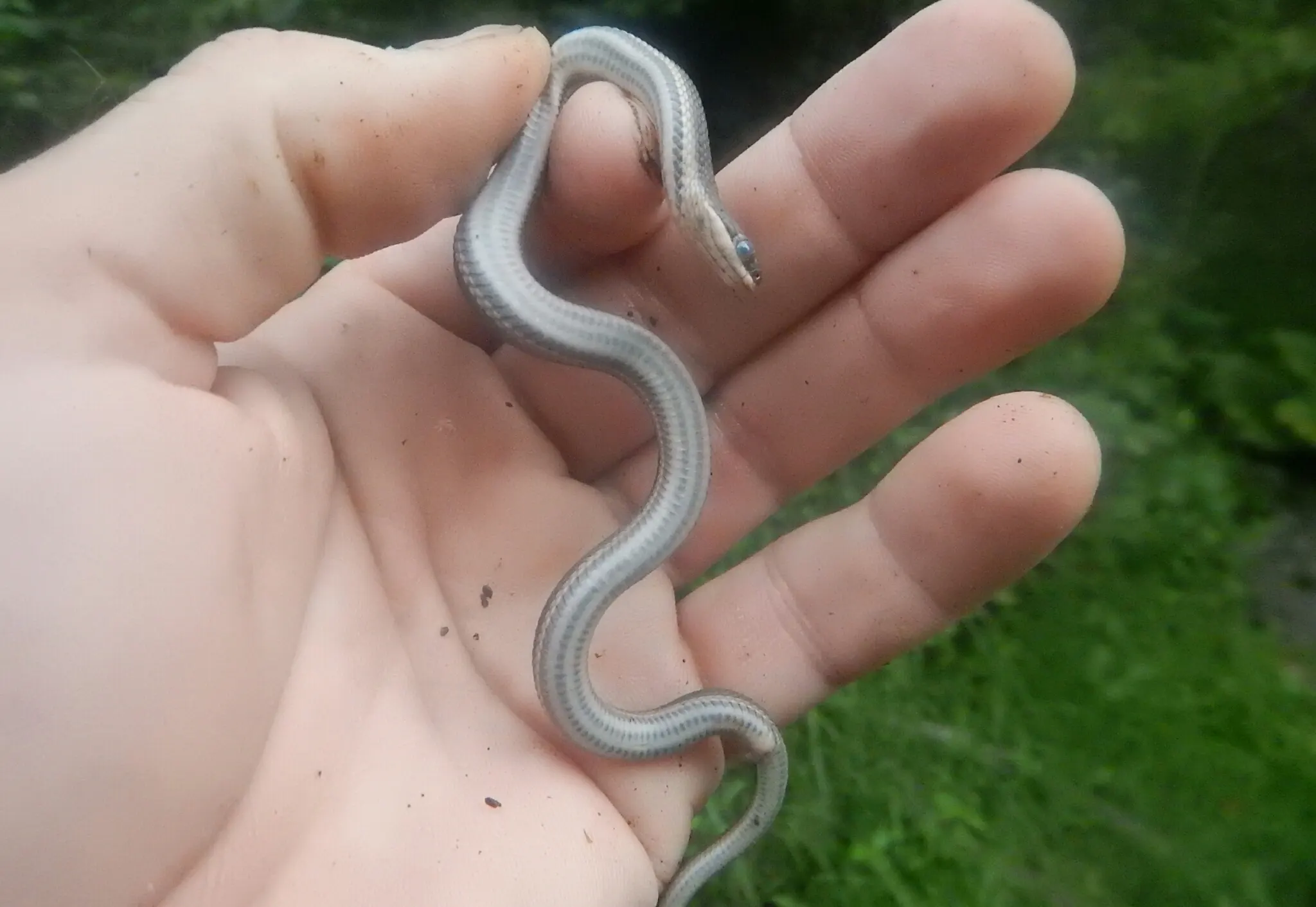
- Scientific Name
- Pantherophis guttatus
- Range
- Everywhere Except Eastern Virginia
- Also Called
- Queensnake, Striped Water Snake
- Venomous
- No
- Features
- Olive to Gray to Dark Brown Body With a Yellowish Stripe Along the Side
- Prey
- Crayfish
- Litter Size
- 5 - 13 Eggs per Birth
- Life Span
- Unknown (19 Years in Captivity)
- Length
- 15 - 24 Inches
Quick Links for Queen Snake
Queen Snake Description
Queen Snake Appearance
Size
This snake is normally between 15 to 24 inches long, however, the record length for this snake is about 36.3 inches. The record found in Virginia is 28.1 inches.
Juveniles tend to be 10 to 12 inches long.
Queen Snake Behavior
These snakes are normally active in the daylight, but sometimes they are seen hunting at night. They are semi aquatic, and will leave the water to bask in the sun or to hunt if they spot prey out of the water.
They do not hunt by sight but by smell, they use their tongues to search for prey. Due to this, they are able to smell even underwater.
These snakes rarely bite, but some will nip if they are roughly handled. If they spot danger they will retreat into the water.
It is illegal in Virginia to keep Wild Snakes as pets
Range and Habitat of The Queensnake
Range
These snakes tend to avoid the coasts of Virginia, or rather the coasts entirely. They can be found everywhere near the water in the south except for the coasts. However, there is a population of them near the coasts of Alabama and Mississippi. They can be found as far north as Ontario and New York
Habitat
Their habitat consists of rivers, streams, swamps, marshes, and lakes. As well as land near these areas, especially the rocky areas near them.
Diet
Their main diet are crayfish, especially those that are molting where their shells are softer. However, they can take other prey, if they cannot find other crayfish.
Reproduction and Young
Reproduction
Mating for these snakes occur in the spring and fall, where the female will lay eggs in Spring or Summer.



